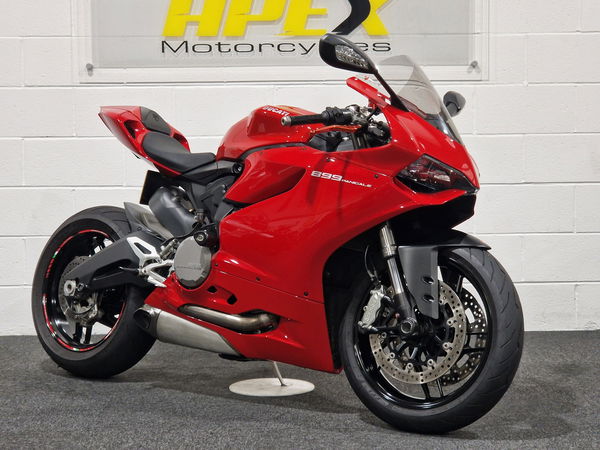How the Indian Challenger became the King of the Baggers
With the King of the Baggers getting its own three-round series in 2021, we take a look at how Indian turned the Challenger into a winner
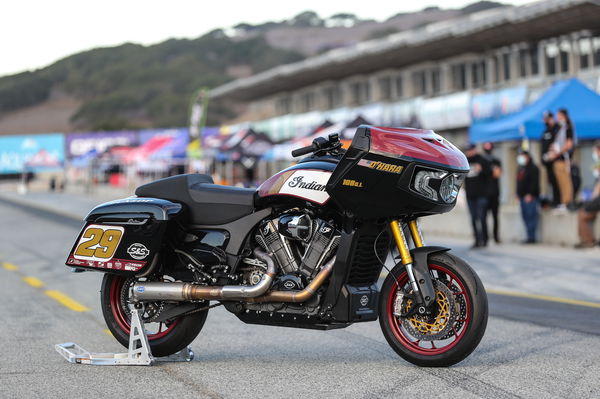
FOR a fairly sizable chunk of time humans have taken pleasure from seeing things in places they shouldn't be. A Monkey in space for instance, or Donald Trump in the White House. In 2021 though, we took that to a whole new level, as Harley-Davidson and Indian did battle in the King of the Baggers.
For 2021, the word “Invitational” has been lopped off the name, while two more race weekends have been added to make the King of the Baggers a three-round championship. What this means is that the King of the Baggers is now open to anyone and everyone who wants to transform an Indian Challenger or Harley-Davidson Big Twin from a touring bike equipped with hard bags into a KOTB racer.
For those looking for a paint-by-numbers guide to how Indian created the victorious machine that took the win in the inaugural race, S&S Cycle, Inc have put together this handy guide. They’re the ones who built the #29 Indian Challenger that Tyler O’Hara raced to victory in last year’s King of the Baggers Invitational.
Indian Challenger King of the Baggers

GROUND CLEARANCE
Circuit racing is rarely about the straights, and racing a Bagger is no exception. The not-so-secret to success is to hustle the big machines through the twisties as quickly as possible, and that requires ground clearence.
So, the first step is to lean your Bagger over on each side and determine which hard parts touch first. Obviously, the floorboards are the first OEM parts that will need to be removed. After that, the wide OEM primary cover and low-slung stock exhaust system generally make contact next.
S&S Cycles’ solutions for the Indian Challenger are:
● A billet-aluminum primary cover that is beveled on the bottom radius to keep the big 108-cubic-inch V-twin engine off the ground
● A 2-into-1 stainless steel exhaust system that is designed to be mounted high up on the chassis
● A billet-aluminum ignition cover that enables the exhaust to tuck in high and tight on the right side of the engine
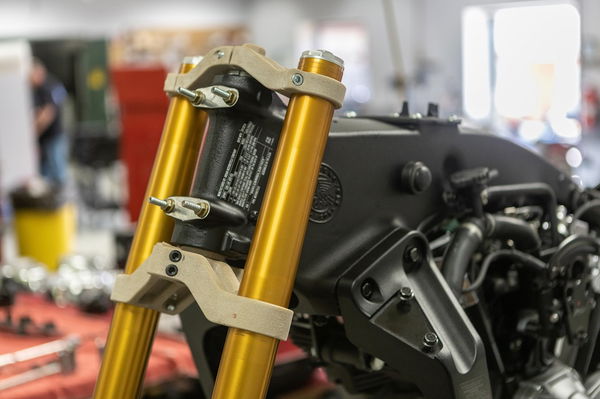
STEERING ANGLE
Touring bikes generally have a very relaxed, slightly kicked-out steering angle, which is almost the complete opposite of the steering angle on most sportbikes.
S&S Cycles’ solutions for the Indian Challenger are:
● A set of Indian FTR1200 forks (tuned for the weight of the Bagger)
● Billet-aluminum triple clamps that adapt the FTR1200 forks to the Indian Challenger head tube and provide adjustments for rake and trail to more closely match the specs of a proper road racing motorcycle
● 17” Performance Machine wheels, which enable the use of Dunlop road racing tires
● Billet-aluminum hubs that adapt the Performance Machine wheels to the Indian Challenger
● A revalve and spring change on the Indian Challenger’s OEM Fox rear shock
● An adjustable suspension link that raises the rear end of the bike up for quicker steering and improved ground clearance
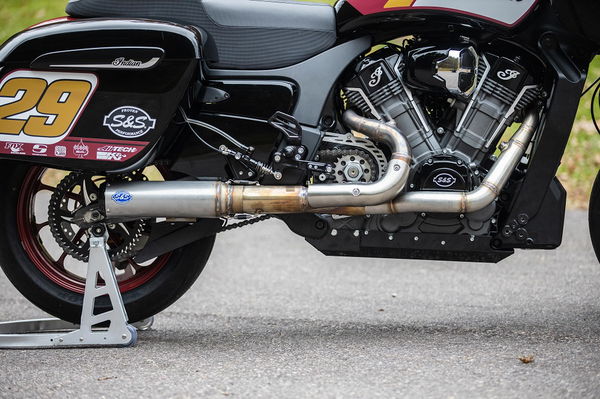
RIDING POSITION
The feet-forward riding position of a touring bike is comfortable out on the open road, but it is all wrong for road racing, which requires a much more aggressive body position with your knees bent and your feet up higher and beneath, or slightly behind, your hips.
S&S Cycles’ solutions for the Indian Challenger are:
● Adjustable-position, billet-aluminum rearsets that are high enough to not touch down and also put the rider in a more active position to control the bike with their body
● Klock Werks Kliphangers handlebars that are adjustable for height and pullback to keep the rider lower and out of the wind while still being comfortable
● A Saddlemen custom-built seat that is taller and fitted to the individual rider
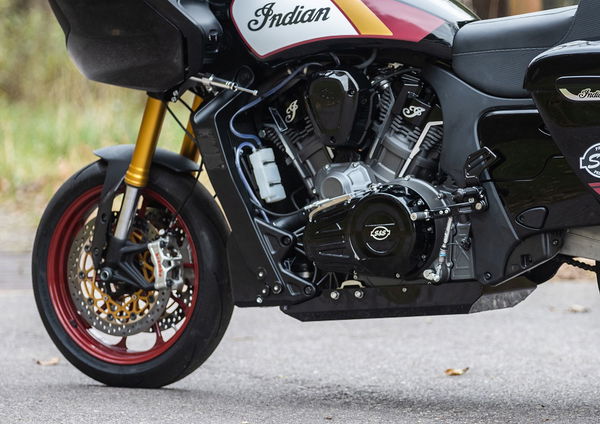
BRAKES
The OEM front and rear brakes on the Indian Challenger are perfectly suited for touring, but for race-level corner-entry speeds, upgrades need to be made.
S&S Cycles’ solutions are:
● A Brembo front master cylinder, stainless steel brake lines, Brembo radial-mounted front calipers, Galfer floating front rotors, and Galfer brake pads
● A Brembo rear master cylinder, stainless steel brake line, Brembo rear caliper, Galfer rear rotor, and Galfer brake pads
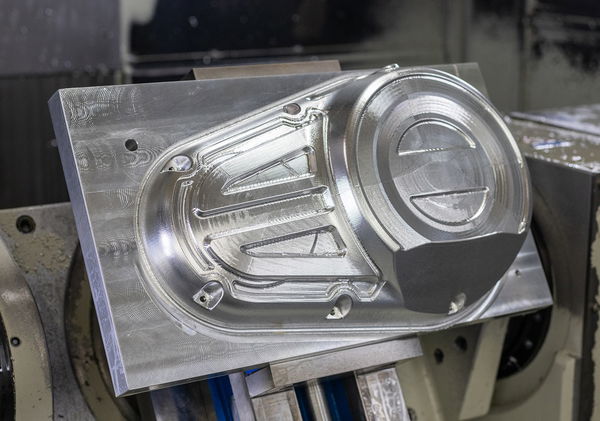
REDUCED WEIGHT
Touring bikes are heavy, and to turn them into road racing motorcycles requires the use of lightweight materials in place of some of the stock components.
S&S Cycles’ solutions for the Indian Challenger are:
● A custom-built, small-volume, aluminum fuel cell wrapped in a carbon fiber shell that mimics the Indian Challenger’s stock fuel tank
● Carbon fiber front and rear fenders
● Carbon fiber hard bags
● Titanium and/or aluminum fasteners in place of heavier steel OEM fasteners

POWER
The Indian Challenger’s liquid-cooled Power Plus 108-cubic-inch V-twin engine is a really solid motor and nearly race-ready in OEM form. But, since the engines run at much higher RPMs in the King of the Baggers Series, a few basic mods are required.
S&S Cycles’ solutions are:
● A mild porting job on the cylinder heads
● Indian Stage 2 camshafts
● A K&N high-flow air cleaner, which combines with the 2-into-1 exhaust system to take more air in and pump more air out, thereby increasing horsepower
Not ready to build your own Bagger? Then, how about another option? S&S Cycles and Indian Motorcycle of Metro Milwaukee, you can purchase your own Indian Challenger King of the Baggers motorcycle built to your specs right at their dealership.

